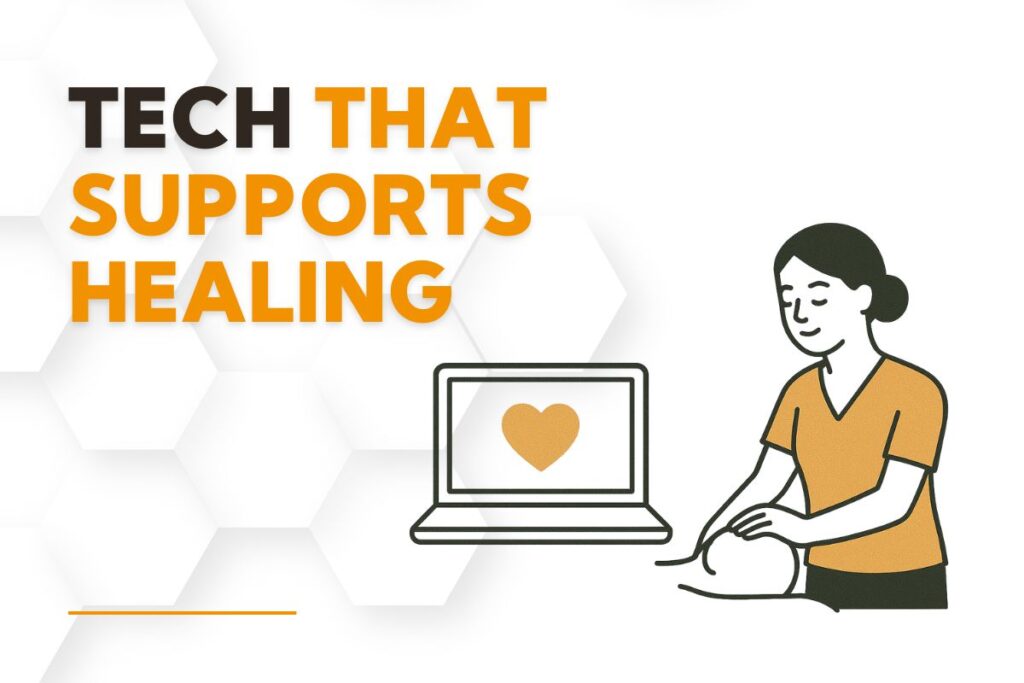Keeping software and hardware up-to-date is essential for any massage therapy clinic
Keeping software and hardware up-to-date is essential for any massage therapy clinic that wants to provide consistent, reliable care. If you’ve ever had a booking system freeze mid-checkout or struggled to print an intake form while a client waited, you’re not alone. Massage clinic owners across North America are silently battling outdated systems that increase stress, waste time, and risk client trust. In fact, small businesses lose an average of 545 hours a year due to IT issues.
For massage therapists who already wear multiple hats, keeping software and hardware up-to-date feels impossible—but neglecting it can quietly erode everything you’ve built. This article will walk you through the hidden costs of outdated technology, and offer a roadmap to get your systems streamlined, secure, and stress-free.
Why Proactive Updates Are Essential for Massage Clinics
A Smooth Client Experience Starts with Reliable Tech
Clients expect a seamless booking and check-in process. But if your intake iPad won’t load or your calendar app is down, it quickly signals disorganization. Even a few glitches can damage a new client’s first impression—and you don’t always get a second chance. That’s why keeping software and hardware up-to-date isn’t optional.
Missed Appointments and Manual Workarounds Add Up
Without timely updates, booking systems become prone to syncing errors, missed confirmations, and ghost no-shows. These aren’t just frustrating—they’re revenue losses. Keeping software and hardware up-to-date helps prevent these disruptions before they affect your bottom line.
Data Protection Risks Grow with Every Delay
Old software often means unpatched security holes. Without regular updates, your client records, intake notes, and payment details may be vulnerable to data breaches—a liability most clinics can’t afford. Staying vigilant and keeping software and hardware up-to-date is one of the easiest ways to protect your clients’ trust.

Why Tech Maintenance Gets Overlooked (and What It Costs)
Clinic Owners Are Overloaded
Between hands-on treatments, staff scheduling, and daily management tasks, technology maintenance rarely makes the top of the list. It’s usually postponed until something breaks—even if that means putting off keeping software and hardware up-to-date.
There’s No Dedicated IT Role
Most clinics don’t have an in-house IT expert. So when updates come through, no one knows whether it’s safe to install, or which features might break. Having a system for keeping software and hardware up-to-date ensures your tech won’t fall behind.
The True Cost of Delaying Updates
A lagging payment terminal or outdated operating system may seem like a small problem. But when it leads to downtime, rebooked sessions, or frustrated staff, it becomes a silent profit drain. The more consistent you are in keeping software and hardware up-to-date, the fewer of these issues you’ll face.
Core Systems That Need Regular Updates
Scheduling and Booking Software
These platforms handle the heartbeat of your business: client appointments. Outdated versions can cause calendar conflicts, double bookings, or failed confirmations. Keeping software and hardware up-to-date ensures these tools work exactly as they should.
Intake Forms and Client Notes
Digital forms rely on browsers, device compatibility, and cloud platforms. If they fall out of sync due to old software, it slows intake and risks data syncing errors. Regular updates help protect sensitive information and maintain legal compliance.
Payment Processing Systems
Whether you’re using wireless terminals or app-based checkouts, payment systems require periodic firmware and app updates to stay PCI compliant. Outdated processors often lead to failed transactions, which frustrates clients and interrupts your revenue flow.
Laptops, Tablets, and Kiosks
Hardware devices naturally slow down over time. A laptop used daily for client scheduling might work fine at year one—but by year three, it can’t keep up with new software demands. Industry best practices recommend replacing key devices every 3–5 years and always keeping software and hardware up-to-date to maximize their performance.
Building a System to Stay Updated
Assign a Tech Champion on Your Team
Choose someone reliable to keep an eye on device notifications, pending updates, and new software versions. This doesn’t need to be an IT professional—just someone consistent.
Schedule Updates During Off-Hours
Avoid client disruption by setting update checks for evenings or quiet clinic hours. Use automated scheduling tools to time software installs when the system isn’t in use.
Automate What You Can
Enable auto-updates for operating systems, browsers, and approved software. Set reminders to manually check key systems like payment terminals or intake apps monthly.
Backup Everything
Always backup client data and system configurations before any major updates. Use encrypted cloud backups that follow industry standards for privacy and security.

When It’s Time to Call a Pro
How to Know You Need Expert Help
If your systems crash frequently, if updates cause more problems than they solve, or if you’re struggling to stay compliant with data protection laws, it’s time to consult an IT specialist.
What to Look for in a Tech Support Partner
Choose a provider who:
- Offers proactive maintenance and remote support
- Understands health and wellness environments
- Helps you create a tailored upgrade and backup plan
Budgeting for Maintenance Instead of Emergencies
It may feel more affordable to wait until something breaks, but that often leads to more expensive emergency fixes. Instead, factor monthly IT support into your clinic’s operating costs—just like you would with laundry or supplies.
Your 90-Day Tech Update Roadmap
First 30 Days: Audit and Prioritize
- Make a list of all software platforms and hardware currently in use
- Identify devices that are older than 4 years or missing updates
- Note any recurring tech complaints from your team or clients
Day 31 to 60: Take Action
- Install critical software updates and security patches
- Replace one outdated device if budget allows
- Assign a team member to monitor update status and create a monthly checklist
Day 61 to 90: Build a Repeatable System
- Create a tech maintenance calendar (monthly and quarterly tasks)
- Setup automated reminders in your team calendar or management tool
- Review what worked and adjust responsibilities as needed
Measuring the Impact of Staying Updated
Watch for Decreases in Tech-Related Disruptions
Track incidents of slow checkouts, login failures, or device crashes. A consistent drop in these numbers means your update system is working.
Monitor Booking Efficiency and Client Feedback
Smooth-running systems result in fewer missed appointments and fewer rebookings. Ask your staff and clients about recent tech experiences to keep a pulse on performance.
Calculate ROI Over Time
Compare revenue losses from past tech issues with current performance. If you used to reschedule 3–4 clients per month due to system failures and now it’s zero, your update strategy is already paying off.
Future-Proofing Your Client Experience Starts Today
Running a massage clinic means balancing hands-on care with behind-the-scenes operations. Keeping software and hardware up-to-date may not be glamorous, but it’s foundational to providing consistent, high-quality service. With a bit of planning, the right tools, and internal systems in place, you can prevent tech issues before they start—and build a clinic that runs as smoothly as the treatments you offer.
For more ways to streamline clinic operations, explore how automated intake forms or smart client scheduling tools can lighten your admin load while improving your client experience.
FAQs
Most laptops, tablets, and payment devices should be replaced every 3 to 5 years depending on usage. Slowdowns, freezing, or update incompatibility are signs it’s time.
Prioritize updates for scheduling software, intake forms, payment systems, antivirus programs, operating systems, and browsers. These have the biggest impact on client experience and security.
You can enable auto-updates for most operating systems and apps, but mission-critical tools (like payment processing or scheduling software) should be updated during downtime and manually tested to avoid disruptions.
Backups are key. Always back up your system before installing updates. Test updates on one device first, especially if you run multiple rooms or locations, to minimize risk.


